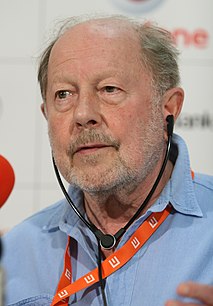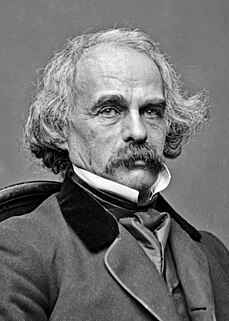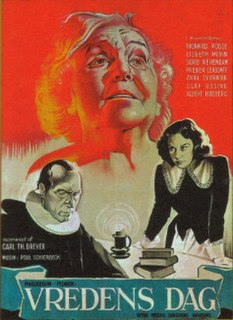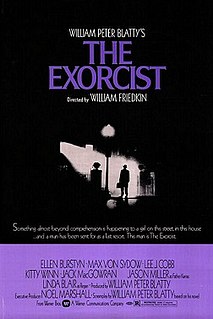
Rosemary's Baby is a 1967 horror novel by American writer Ira Levin, his second published book. It sold over 4 million copies, "making it the top bestselling horror novel of the 1960s." The commercial success of the novel helped launch a "horror boom", where horror fiction would achieve enormous commercial success.
Mephisto or Mephistopheles is one of the chief demons of German literary tradition.
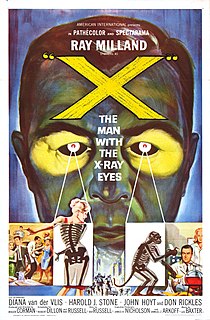
X: The Man with the X-ray Eyes is a 1963 independently made color science fiction-horror film, produced and directed by Roger Corman, that stars Ray Milland. The film, written by Ray Russell and Robert Dillon, is notable for featuring comedian Don Rickles in a straight dramatic role. Veteran character actor Morris Ankrum makes an uncredited appearance in his final role. American International Pictures distributed the film in the fall of 1963 as a double feature with the Francis Ford Coppola-directed horror thriller Dementia 13.

Mario Bava was an Italian cinematographer, director, special effects artist and screenwriter, frequently referred to as the "Master of Italian Horror" and the "Master of the Macabre". His low-budget genre films, known for their distinctive visual flair and technical ingenuity, feature recurring themes and imagery concerning the conflict between illusion and reality, and the destructive capacity of human nature.
Charles Robert Band is an American film producer and director, known for his work on horror comedy movies.

The Terror is a 1963 Independent American Vistascope horror film produced and directed by Roger Corman. The plot concerns a French officer who finds an intriguing woman who is believed to be the ghost of a baron's long departed wife. It was filmed on sets left over from other AIP productions, including The Haunted Palace. The film was also released as Lady of the Shadows, The Castle of Terror, and The Haunting; it was later featured as an episode of Cinema Insomnia and Elvira's Movie Macabre.
Ray Russell was an American editor and writer of short stories, novels, and screenplays. Russell is best known for his horror fiction, although he also wrote mystery and science fiction stories.

The Masque of the Red Death is a 1964 horror film directed by Roger Corman and starring Vincent Price. The story follows a prince who terrorizes a plague-ridden peasantry while merrymaking in a lonely castle with his jaded courtiers. The screenplay, written by Charles Beaumont and R. Wright Campbell, was based upon the 1842 short story of the same name by American author Edgar Allan Poe, and incorporates a subplot based on another Poe tale, "Hop-Frog'". Another subplot is drawn from Torture by Hope by Auguste Villiers de l'Isle-Adam.

The Pit and the Pendulum is a 1961 horror film in Panavision and Pathe Color directed by Roger Corman, starring Vincent Price, Barbara Steele, John Kerr, and Luana Anders. The screenplay by Richard Matheson was loosely inspired by Edgar Allan Poe's 1842 short story of the same name. Set in sixteenth-century Spain, the story is about a young Englishman who visits a forbidding castle to investigate his sister's mysterious death. After a series of horrific revelations, apparently ghostly appearances and violent deaths, the young man becomes strapped to the titular torture device by his lunatic brother-in-law during the film's climactic sequence.

Witchcraft, also known as Witch and Warlock, is a 1988 horror film directed by Rob Spera and starring Anat Topol, Gary Sloan, Mary Shelley, Elizabeth Stocton, Deborah Scott, Alexander Kirkwood, Lee Kissman and Ross Newton. The screenplay was written by Jody Savin. It is the first film in the Witchcraft series, followed by Witchcraft II: The Temptress.

Night of the Eagle is a 1962 British-American horror film directed by Sidney Hayers. The script by Charles Beaumont, Richard Matheson and George Baxt was based upon the 1943 Fritz Leiber novel Conjure Wife. The film was retitled Burn, Witch, Burn! for the US release.
Children have been accused of witchcraft, both historically and in contemporary times, in societies that harbour beliefs about the existence of witches and black magic. These accusations have led to punishment, imprisonment, torture, and execution of children.
Supernatural horror film is a film genre that combines aspects of horror film and supernatural film. Supernatural occurrences in such films often include ghosts and demons, and many supernatural horror films have elements of religion. Common themes in the genre are the afterlife, the Devil, and demonic possession. Not all supernatural horror films focus on religion, and they can have "more vivid and gruesome violence".

Witches' Brew, also known as Which Witch Is Which?, is a 1980 American comedy horror film co-written and directed by Richard Shorr, and starring Richard Benjamin, Teri Garr, and Lana Turner. It was based on Fritz Leiber Jr.'s horror-fantasy novel Conjure Wife. Herbert L. Strock directed additional sequences for the film.
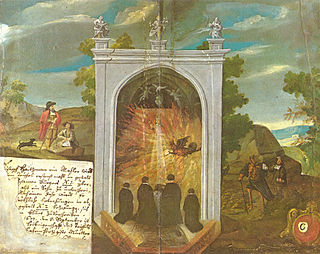
The idea of making a deal with the devil has appeared many times in works of popular culture.
The Filmgroup was a production and distribution company founded by filmmakers Roger Corman and Gene Corman in 1959. Corman used it to make and distribute his own movies, as opposed to ones he was making for American International Pictures. The company ultimately folded, however, lessons from running the company helped Corman make a success later of New World Pictures. Filmgroup also produced early feature work of Francis Ford Coppola, Peter Bogdanovich, Charles B. Griffith, Curtis Harrington, Jack Hill, Monte Hellman, Robert Towne and Jack Nicholson.
Eugene Harold "Gene" Corman is an American film producer and agent. He is the younger brother of Roger Corman.
A Satanic film is a subgenre of horror film, and at times other film genres, that involves the Devil as a concept or a character. Common themes/characters in Satanic film include the Antichrist, demonic possession, exorcism, and witchcraft.
Witchcraft III: The Kiss of Death is a 1991 horror film directed by Rachel Feldman and starring Charles Solomon Jr, Dominic Luciana, and Nicole Lauren. It is the third film in the WitchCraft Horror Series. The film was distributed by Troma Studios and produced by Vista Street Entertainment. It is fallowed by Witchcraft IV: The Virgin Heart


